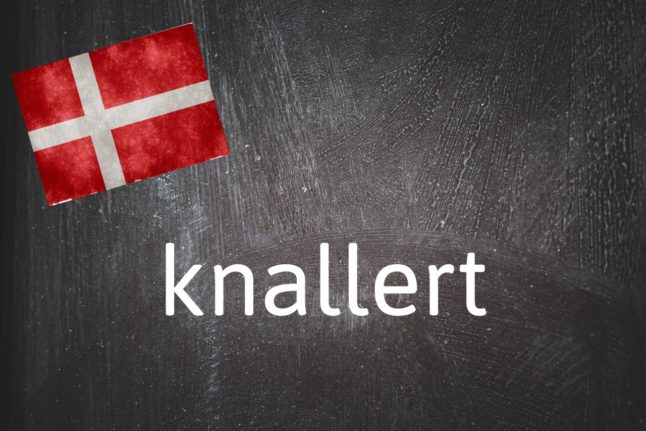What is knallert?
A knallert is roughly the vehicle that you would generally call a “moped” in English — in other words, a small motorcycle with a low cc engine.
The word scooter is also used in Danish but it’s not exactly the same as the English “scooter”. This can be seen in the differences between scooter and knallert, and “moped” and “scooter” respectively.
Taking the Danish terms first, a scooter is smaller than a knallert. The difference is usually defined by the size of the wheels: if it’s 10-16 tommer or inches (the imperial unit is confusingly used in Denmark for wheel sizes), then it’s a scooter. Any larger and you have a knallert.
In English, meanwhile, a scooter and a moped can have the same appearance (with the platform on which you can rest your feet), but engine size matters more: under 50cc and it’s a moped (although this definition also applies to a knallert), more than that and it’s a scooter.
As such, “scooter” is the larger of the two in English but not in Danish. You might sometimes see a sign stating Knallert forbudt (“No mopeds”) on smaller Danish cycle paths such as country paths that don’t run alongside a road. This is because mopeds can sometimes share bicycle lanes with bicycles, but some cycle lanes don’t permit this.
While “scooter” can also be used in English to describe a child’s two-wheeled, pre-bicycle toy complete with handle bar, this has a different Danish name, løbehjul (literally “running wheels”).
Why do I need to know knallert?
The word knallert, to mean “moped” emerged in the 1950s as the small motorised bikes increased in popularity outside of their spiritual home in Italy.
It was originally a slang expression given to a bicycle that had a small motor fitted, meaning it emitted the “put-put-put” noise of such engines.
The verb at knalde (which later became slang for having sex, but that’s for another day) can be used to describe this sort of low-grade, repetitive banging noise.
Knallert thereby evolved from at knalde, before eventually become a word in its own right and not just a slang term: it is, as such, an example of “dead slang” that is no longer slang but has its own distinct meaning.



 Please whitelist us to continue reading.
Please whitelist us to continue reading.
Member comments